By Linda Turner Griepentrog
If you’re new to quilting, or just getting back into it after several years’ lapse, there are a few basic quilting notions you can’t live without. Not only do they make your quilting easier, but they help with accuracy and quality stitching as well.
Rotary Cutter
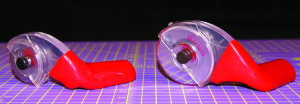
Most quilters have more than one rotary cutter—whether they’re different sizes or brands, these handy tools are key to accurate and fast cutting of multiple fabric layers. Available in blade sizes from 18mm to 65mm, use the smaller size if you’re cutting curves, and the larger one for straight cuts. Look for a cutter with a safety latch to protect you and the blade, and choose a handle style that’s comfortable for you—there are ergonomic options, cushioned grips and the traditional straight handles. If color is important, look for special-edition prints, or cutters that benefit a cause you support. Besides the basic cutting blade, add to your stash some decorative edge blades like pinking, scallop and wave edges for special finishing on items such as fleece quilts and quilt-block appliqués.
Rotary Mat
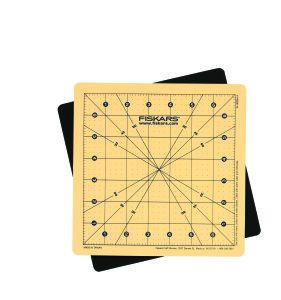
01-001625 001
Rotary cutters must be used with a special cutting mat to protect the tabletop and maintain the cuttingblade edge. Mats are available in many sizes, from small ones convenient for toting to class, to tabletop size. For studio use, larger is better, but be sure your mat is at least 24″ across to accommodate most fabrics without refolding. Mats have some kind of printed gridwork, angles or shapes to help with squaring and aligning cut lines. Some brands are reversible with different line and/or shape patterns on both sides. Be sure whatever mat you choose has clearly visible lines and that it is self-healing for long wear. Add a rotating mat to your tool stash—it spins like a lazy Susan for easier cutting on multiple sides with just a twist. If you’re looking for double duty, look for a two-sided surface— one for rotary cutting and the other a gridded pressing board, a space saver perfect for toting to class.
Ruler
Like cutters, quilters always have more than one ruler; but if you’re just beginning to acquire your quilting tools, begin with a 6″ x 24″ ruler that’s marked with 30-, 45- and 60-degree angles. This ruler spans traditional 45″-wide fabrics for easy strip cutting, and the angles allow for more complex cuts where needed. Square rulers with numbers on all sides, in 61/2″ and 121/2″ sizes, allow you to square up blocks and triangles with ease. Look for rulers with 1/8″ markings on all sides, and a nonslip surface for safer and more accurate cutting. Beyond these basics, there are myriad specialty rulers, so start collecting as your budget allows!
¼” Foot
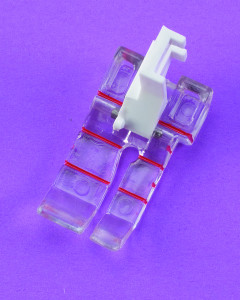
Seaming accuracy is of the utmost importance, so if your sewing machine doesn’t have a 1/4″ foot, look for a generic version. Depending on the brand, one side may be 1/4″ and the other side 1/8″ or 3/8″ wide. This foot has a single, round needle hole for accurate straight stitching, and crosswise markings on the toes allow for accurate cornering and mitering tasks.
Slider Mat
Need help with sliding the fabric around smoothly for free-motion quilting? A nonslip silicone sheet that covers the machine bed makes slick work of the task. It can be trimmed with scissors to fit the feed dogs and machine bed, and has a tacky backing to keep it in place.
Iron
A full-size iron is great for pressing blocks, but if you want to work next to your sewing machine or tote a project to class, check out one of the mini-iron options. Offering various features and settings, depending on the brand, these tiny workhorses are handy to have. Along with the portable iron, protect your tabletop with a pressing pad.
Markers
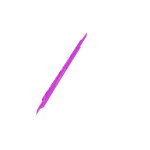
Whether you prefer air- or water-soluble ink, there’s a marker to fit the bill. Shaped like a pencil or ballpoint pen, various brands offer different colors depending on your marking needs, and some offer a thick and thin marker on opposite ends of the same tool. Also look for washable chalk pencils in a variety of colors. It’s important to read the directions with all marking tools, as some become permanent if pressed over before removal. Test-mark (and remove) on a fabric scrap before you choose the appropriate method.
Thread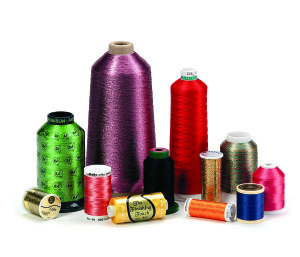
For piecing, use 100 percent cotton thread in a basic color, like off-white, gray or black. These neutrals span most every color range with ease, though if your fabric isn’t opaque, you may want matching thread. Choose a quality thread that’s smooth, tightly twisted and even in appearance. For quilting threads, the sky’s the limit—whether you select solid or variegated, look for novelties in rayon, cotton and metallic that fit the mood of your quilt. While you want to use a size 50 thread for piecing, you can use a 60-, 50-, 30- or 12-weight for quilting. Remember: the bigger the number, the finer the thread. Test-stitch to see what type and size you like best, and adjust the needle size to accommodate larger threads.
Threader
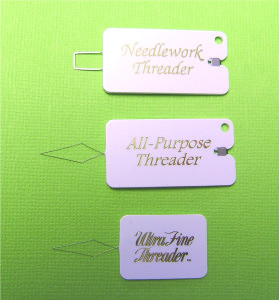
While some machines offer a built-in needle threader, there are times when it’s handy to have a separate threader. Look for a set that offers threaders in multiple sizes, with a thread cutter for those portable quilting projects.
Earth Envy
Organic threads and fabrics continue to enter the quilting marketplace, and other sustainable options, like bamboo, wool and alpaca batting are readily available, so consider quilting with earth-friendly options when you have a choice. Gather quilting notions before you start any quilting project!
Resources for featured products: 1/4″ foot, www.Clotilde.com Clover Markers, www.clover-usa.com Dritz Petite Plus Iron, www.dritz.com Fiskars Rotary Cutter and Mat, www.fiskars.com June Tailor Cut’n’Press II Board, www. junetailor.com Klaer Intl. Needle Threaders, needlethreaders@aol.com Martinelli Rotary Cutters and Mat, www.martinelli.com Olfa Rulers, Blades and Rotary Cutter, www.olfa.com SewSlip Mat, www.sewslip.com YLI Organic Thread, www.ylicorp.com




